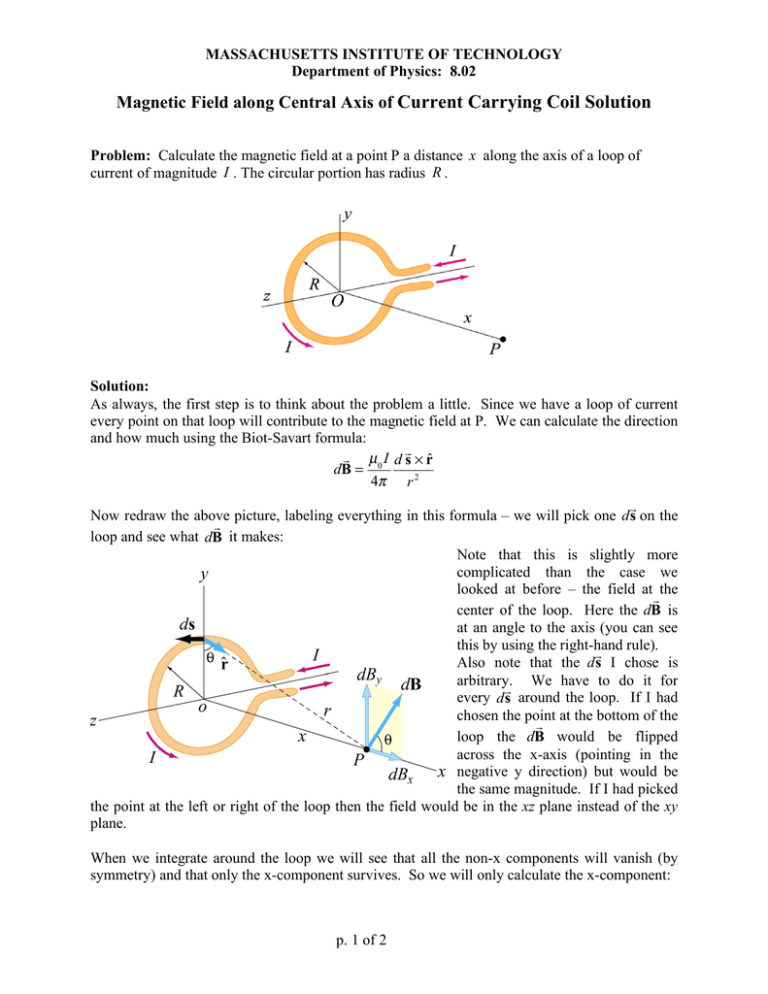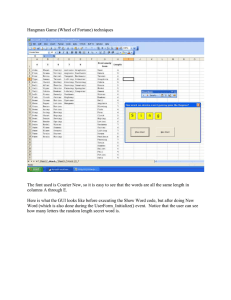Magnetic Field along Central Axis of Current Carrying Coil
advertisement

MASSACHUSETTS INSTITUTE OF TECHNOLOGY Department of Physics: 8.02 Magnetic Field along Central Axis of Current Carrying Coil Solution Problem: Calculate the magnetic field at a point P a distance x along the axis of a loop of current of magnitude I . The circular portion has radius R . Solution: As always, the first step is to think about the problem a little. Since we have a loop of current every point on that loop will contribute to the magnetic field at P. We can calculate the direction and how much using the Biot-Savart formula: ! µ0 I d !s " r̂ dB = 4! r 2 ! Now redraw the above picture, labeling everything in this formula – we will pick one ds on the ! loop and see what dB it makes: Note that this is slightly more complicated than the case we looked at before – the field at the ! center of the loop. Here the dB is at an angle to the axis (you can see this by using the right-hand rule). ! Also note that the ds I chose is arbitrary. We have to do it for ! every ds around the loop. If I had chosen the point at the bottom of the ! loop the dB would be flipped across the x-axis (pointing in the negative y direction) but would be the same magnitude. If I had picked the point at the left or right of the loop then the field would be in the xz plane instead of the xy plane. When we integrate around the loop we will see that all the non-x components will vanish (by symmetry) and that only the x-component survives. So we will only calculate the x-component: p. 1 of 2 MASSACHUSETTS INSTITUTE OF TECHNOLOGY Department of Physics: 8.02 ! µ0 I | d s # r̂ | µ IR R ds since cos! = and r = (x 2 + R 2 )1/ 2 dBx = dBcos! = cos! = 0 2 2 2 3/ 2 r 4" 4" (x + R ) r ! Note that there was no sin(θ) term from the cross product because ds and r̂ are perpendicular. Finally, we just need to integrate around the loop: Bx = µ0 IR 4! (x 2 + R 2 )3/ 2 !" ds = p. 2 of 2 µ0 IR 2 2(x 2 + R 2 )3/ 2
